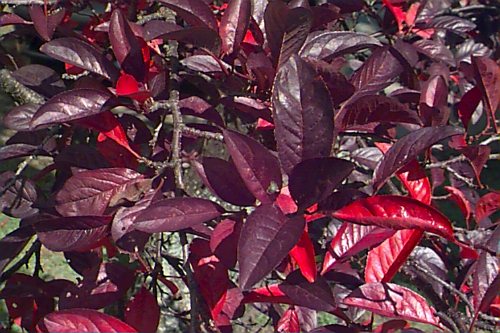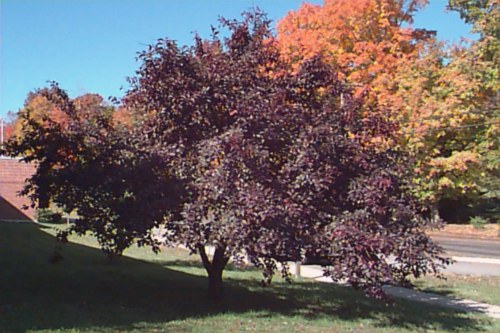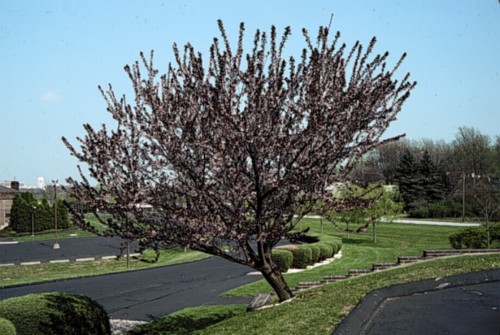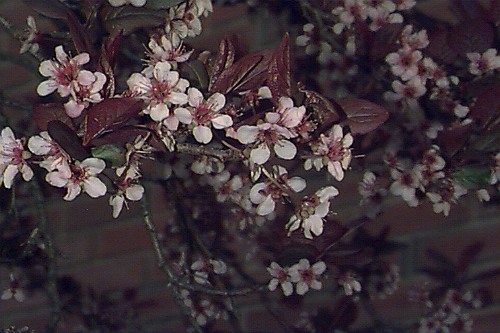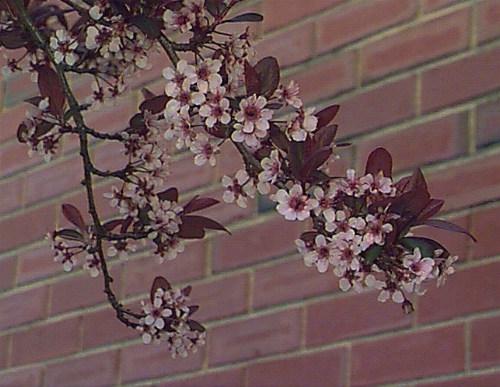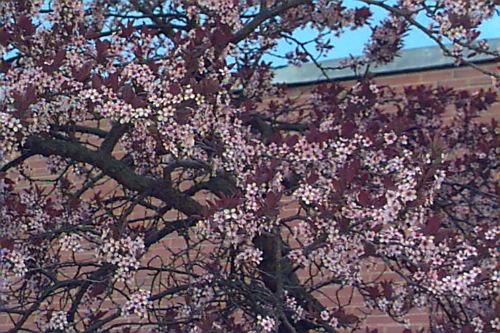Prunus cerasifera
Thundercloud Plum, Myrobalan Plum
Rosaceae
ExpandHabitat
- native to Asia
- hardy to zone 5, and warmer parts of 4
Habit and Form
- a small, deciduous tree
- 15' to 28' tall
- similar spread
- upright, spreading habit
- rounded crown
- medium texture
- moderate to fast growth rate
Summer Foliage
- alternate leaf arrangement
- simple, deciduous leaves
- serrate margins
- obovate leaf shape
- 1.5" to 2.5" long
- pointed tip
- pubescent midribs
- bright green leaf color
- if present glands occur near leaf base
Autumn Foliage
- not ornamentally important
Flowers
- pinkish, white flowers
- up to 1" long
- fragrant
- blooms before leaves emerge
- solitary
- showy
Fruit
- reddish drupe
- edible
- 1" in diameter
- matures in late summer
- attracts birds
- not ornamentally important
Bark
- not ornamentally important
- dark, reddish brown
Culture
- full sun
- prefers well-drained, acidic soil
- drought tolerant
- transplant in Spring
- prune after flowers
Landscape Use
- specimen
- small shade tree
- container
- cultivar for purple leaf color
Liabilities
- short-lived, 20 years
- aphids, borers, scale, tent caterpillars
- canker, leaf spot
- does not like compacted soil
ID Features
- small, deciduous tree
- alternate leaf arrangement
- serrulate leaf margins
- possibly glands on petiole
- pubescent midrib
- pinkish, white flowers
- round, fleshy fruit
Propagation
- cultivars by cuttings
- by seed
Cultivars/Varieties
'Atropurpurea' (also known as 'Pissardii') - This is the original selection (1880), also known as "Pissard Plum". It features reddish-purple foliage and light pink blooms. It is of questionable hardiness in USDA zone 4 and colder. Many named selections have arisen from this plant.
'Krauter Vesuvius' (also known as 'Vesuvius') - Very similar to 'Thundercloud', this selection has a more upright habit (to 30' tall with a spread of 20') and white-pink blooms. It may be a slightly more heat-tolerant selection.
'Mt. St. Helens' - A sport of 'Newport', this cultivar appears to grow more strongly. The main trunk is sturdier and straighter, plus the plant grows more vigorously. It reaches 20' tall and wide with larger leaves of a deeper purple color.
'Newport' - Considered the most hardy form, this selection out of Minnesota forms a rounded, 15'-20' tall tree with light pink blooms in early spring. The foliage retains its dark purple coloration all season and the plant produces purplish fruit. It is probably the best choice for cold New England climates, though purple-leaved plants such as this are thoroughly overused.
'Thundercloud' - This is the most popular selection and is very common in commerce. It forms a 20' tall and wide rounded tree with lustrous deep purple foliage all season. The slightly fragrant, pink blossoms emerge with or slightly before the foliage. As with all the purple-leaved plums, this tree has been used to the point of monotony in landscapes.
